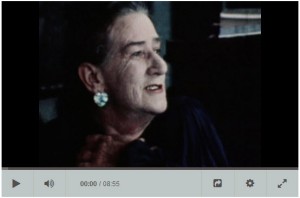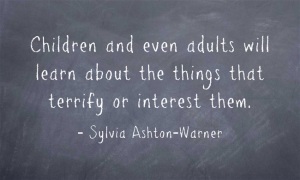In a previous post I wrote about 3 inspiring educators. In no way did I wish to indicate that the number of inspiring educators was limited to those three or that all inspiring educators are male. The list of inspiring educators is far greater than that and includes both male and female representatives.
The purpose of this post is to both honour, and share the wisdom of, other educators who have positively impacted my life and thinking as an educator and the lives and education of many others. The list doesn’t end here. There will be more to follow.
Maria Montessori (1870 – 1952)
Maria Montessori’s name is known worldwide as the founder of the Montessori Schools. However her influence is not restricted to those schools. Many educational practices implemented, especially in the early childhood setting were influenced by Maria Montessori.
Maria resisted the gender-stereotyping conservative views of Italy where she lived in the late nineteenth century. She developed her interest in maths and sciences, especially biology, and became the first female doctor in Italy.
As a doctor Maria worked with children from poor and working class families. She developed the belief that every child had an intrinsic intelligence. She studied child development and education extensively and developed methods of implementing her theories. She traveled Europe sharing her ideas and advocating women’s and children’s rights. Her success with disabled students led to implementation of her methods with ‘normal’ children.
Montessori’s methods put the child’s interests at the front of the program. The teacher was to ‘follow the lead’ of the child.
Practices now seen as standard that were initiated or influenced by Maria Montessori:
- incorporation of children’s interests, putting their interests first
- recognising the development of the individual and making education appropriate to it
- use of child-sized furniture and shelving
- practical activities such as sweeping and cleaning up
- environmental activities such as gardening
- health and hygiene practices, such as washing hands, sharing morning tea, cooking
- indoor/outdoor areas that children move about freely
- opportunities to work independently
- respecting the child as an individual
She valued independence and saw it as the aim of education, with the teacher as observer/guide of children’s development.
This video explains a little of her work.
Sylvia Ashton-Warner (1908 – 1984)
Sylvia Ashton-Warner is a New Zealand writer, poet and teacher whose educational work I became familiar with in the 1980s through her books Teacher and Spinster, the latter of which was also made into a movie.
Sylvia, who in the interview below states emphatically that she is not a teacher, that she hates teaching and can’t stand education, has been very influential on teachers around the world.
Sylvia says,
“There’s a formula for all my teaching. It’s quite simple. I supply the conditions where life can come in the door . . . where both our teacher and our child can be themselves.”
Working with Maori children from poor and dysfunctional families and using organic reading, she developed what is called the ‘Key Vocabulary’; those words holding most meaning and interest to the child. The child asks for a word, the teacher writes it on a card. The child reads the word and copies it to write. The words requested are usually nouns and hold a lot of meaning for the child.
I implemented her ‘Key Vocabulary’ for many years and found it to be a successful tool for developing readers and writers.
Marie Clay (1926 – 2007)
Marie Clay is another New Zealand educator best known for her work with literacy education and the Reading Recovery program which was developed to support students whose reading skills were delayed. She believed that early intervention was the key to improving literacy skills.
I first came across her work in her book Reading: The Patterning of Complex Behaviour in 1979. Her 1983 publication Record of Oral Language provided teachers with methods of observing and recording children’s development in literacy.
The Reading Recovery program, based on Marie Clay’s work and developed in the early 1980s, provides one-on-one support for students who are experiencing difficulty with reading in the first years of school. The teachers undergo training which develops their understanding of the reading process and how to support a student’s development. The training is more intensive and thorough with methods specific to this purpose, than generalised teacher education. However knowledge of her research, innovations and methodologies are also of benefit to generalist teachers and have been incorporated into many teacher education programs.
I was very disappointed, as were many other classroom teachers, when this successful program was discontinued in our region earlier this century.
Barbara Arrowsmith-Young (1951 – )
I first heard about Barbara Arrowsmith-Young in Norman Doidge’s book The Brain that Changes Itself.
I couldn’t put this book down. My thinking about the brain and learning was being challenged but excited at the prospect of overcoming learning problems experienced by many students.
For years I watched helplessly as scores of struggling learners were pummelled with repetition of the same boring and meaningless methods that created (or at least contributed to) their problems in the first place; of seeing them humiliated by having to repeat a year at school, or being considered ‘dumb’ because they couldn’t do what the other kids could do. Now here was a book that suggested this need not be so. If only those making the decisions and delivering the programs could be influenced.
One of the most memorable stories from the book was that of Barbara Arrowsmith-Young. Barbara suffered from severe learning disabilities throughout her childhood and early adult years. Every known method of compensating for the disabilities was tried without success. Barbara felt humiliated and a failure.
Her life changed dramatically when she heard about neuroplasticity of the brain (the ability of the brain to change in physiology and functionality) and created exercises for her brain, teaching herself to do things she had never done before.
Her story is an inspiring one of courage, strength, and persistence. Barbara has changed her life. After turning her life around, Barbara has developed programs for others with disabilities to engage with. She started the Arrowsmith School in Toronto in 1978. The Arrowsmith Program is now used in schools in the US and Australia as well as Canada.
Barbara’s “vision is of a world that we create in which no child has to live with the ongoing struggle and pain of a learning disability. . . that cognitive exercises become just a normal part of curriculum. . . that school becomes a place that we go to strengthen our brains to become really efficient and effective learners engaged in a learning process where not only, as learners, can we dare to dream, but we can realize our dream . . . This is the perfect marriage between neuroscience and education.”
You can read her story in The Woman Who Changed her Brain, and listen to her speak in this video:
She travels the world sharing her message so you may even have an opportunity of meeting her in person. I saw her last year at the Brisbane Writers’ Festival. Magic!
You may have noticed some unifying threads with each of these educators:
A focus on the child, the child’s interests and life
A recognition of the child’s ability to learn
An optimism in the child’s ability to learn, for success and the future
All educators worked with students from disadvantaged backgrounds or with disabilities or both; and all achieved success.
I welcome your feedback. Please share your thoughts about any aspect of this article.



